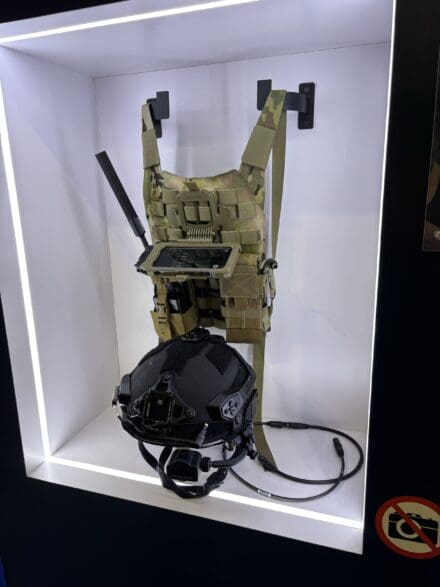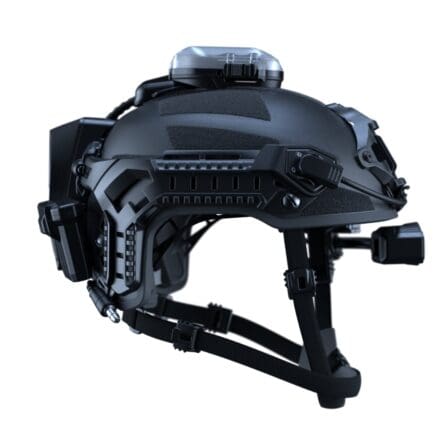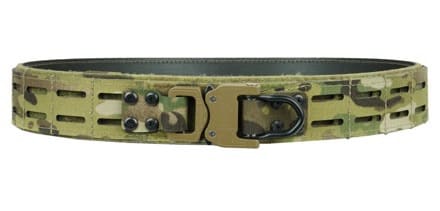Galvion CEO Todd Stirtzinger looked at me and said, “We are not only going to transform how helmets are made, but how they are used.” That was how he opened our meeting during last month’s SOF Week in Tampa, Florida and it certainly got my attention.
He led me to a helmet with multiple enablers and began to explain Galvion’s digitally enabled smart helmet, CORTEX.
The project stemmed from development for the UK’s Defence Science and Technology Laboratory Future Integrated Dismounted Soldier Vision (FIDSV) program. Further work has been accomplished on behalf of US Special Operations Forces. Integration is an ongoing process.
What’s amazing about CORTEX is that a Soldier can dump out his bag of kit and Galvion can integrate it, digitally. Enablers like smart watches, biometric sensors, strobes, laser detection systems, night vision, and thermal optics are no problem. They’ve encountered it all. The system is hardware agnostic and relies upon software, cables, and connectors to act as bridgeware so that everything comes together as a system, no matter who manufactured it. It is both modular and scalable and offers both data and power management.

Using the helmet as a platform, edge processing is accomplished with a module featuring an internal battery and purpose-built android-based operating system which is compatible with Tactical Awareness Kit, the de facto command and control interface for the Dismounted Soldier. This increases Soldier acceptance and facilitates faster integration of new systems.
CORTEX is powerful. It will automatically detect whether a visual augmentation system is compatible with Augmented Reality inputs. This places key data in the VAS field of view, in the direction it is found in real life. Key ATAK functions can be accessed with a quick button press via the built-in 4-key controller at the temple, eliminating the need to open the EUD. This moves the data from the usual torso mount and puts it in front of the eye so the Soldier can concentrate on the battlespace.

Everything is streamlined to make the data more digestible. There’s nothing worse than being overwhelmed with extraneous data and icons cluttering the field of view. Consequently, the AlertCentr plugin for ATAK is configurable by the Soldier who can setup multiple profiles for different phases of a mission. Navigation waypoints, target data, blue as well as red force information, and drone feeds can all be toggled data on and off based on what is needed for the task at hand.
With multiple system communication protocol options (USB, ISW, Bluetooth, Wi-Fi) and onboard battery, CORTEX is designed to fit Galvion’s Caiman and Hellbender helmets, although it has also been integrated unto select helmets from other manufacturers, based on customer needs.

With a combination of cabling running under rails (VAS connector, 4-key controller, Laser Sensor) as well as some exposed connection cabling, Galvion informs me that in the not-too-distant future, cables won’t be visible. They’ll be incorporated inside. As Mr Stirtzinger alluded to in his opening statement to me, Galvion is going to change the way helmets are made. The result will be a more elegant way to integrate power and data into the helmet.
The system is already fielded in limited numbers with interest growing. Integration with new peripherals continues, along with functionality as more customers adopt the CORTEX ecosphere.
www.galvion.com
You can skip to the end and leave a response. Pinging is currently not allowed.
Read the full article here








Leave a Reply